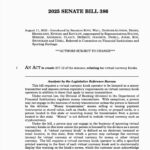Meta description: France’s central bank deficit reaches €7.7B in 2024. Experts suggest ECB money printing could boost Bitcoin, echoing 2020 QE impacts.
Focus keyphrase: France central bank deficit Bitcoin
Slug: france-central-bank-deficit-bitcoin-ecb-qe
SEO title: France Central Bank Deficit May Boost Bitcoin: Experts
Alt text suggestion: France central bank building, potential impact on Bitcoin market
France Central Bank Deficit May Boost Bitcoin: Experts
Background: France Central Bank Deficit Reaches Record High
The France central bank deficit has reached a significant level, with the Banque de France announcing a net loss of €7.7 billion ($8 billion) for the 2024 fiscal year. The loss, reported in a March 2025 press release, is primarily attributed to negative net interest income due to high interest payments. France’s overall government deficit now stands at over €168 billion ($176 billion) for 2024, equivalent to 5.8% of the nation’s GDP. This figure significantly surpasses the European Union’s 3% deficit ceiling.
France’s current financial position makes it one of the European bloc’s weakest performers in terms of fiscal health. The central bank deficit highlights capital outflows and broader concerns about France’s economic stability, as funds move out of the country.
Market Reaction and Bitcoin Implications
Arthur Hayes, co-founder of BitMEX and noted cryptocurrency expert, believes the France central bank deficit could trigger a wave of money printing by the European Central Bank (ECB). During an interview at TOKEN2049 in Singapore, Hayes stated, “French capital is leaving France. And if you take a look at the gross change of any other member, it’s the worst,” according to Cointelegraph.
Hayes asserts that capital previously flowing into France from Germany, Japan, and the US is declining, putting further pressure on French finances. He argues that the ECB may have little option but to initiate extensive quantitative easing (QE)—essentially creating trillions of euros through bond purchasing and injecting liquidity into the market. Hayes predicts this move would “predicates the ECB to print now or print later in the trillions of euros. And that’s the aggregate size.” He suggests such policy shifts would be “another great thing for crypto.”
Foreign entities own approximately 60% of French bonds, with Germany and Japan being key investors. However, reduced investment from these countries, especially amid changing global economic conditions, is contributing to France’s budgetary challenges.
Quantitative Easing and Bitcoin Performance
The France central bank deficit is renewing discussion about the impact of policy decisions like quantitative easing on Bitcoin. QE involves central banks purchasing government bonds and releasing cash into the financial system to stimulate economic spending. In similar past scenarios, such as the US Federal Reserve’s $4 trillion bond-buying program during the 2020 COVID-19 pandemic, Bitcoin’s price surged. From March 2020 to November 2021, Bitcoin increased by more than 1,050%, leaping from $6,000 to $69,000.
Industry analysts are closely monitoring the ECB’s next steps, as further monetary stimulus could once again make Bitcoin and other cryptocurrencies attractive to investors seeking assets that potentially hedge against inflation and currency debasement. The potential for renewed capital inflows into crypto markets is heightened if the ECB commits to supporting deficit-stricken member states like France.
What’s Next for France and Bitcoin Markets
With France running one of the largest deficits in the eurozone, pressure mounts on the ECB to deploy new fiscal tools, possibly including aggressive QE. This scenario may trigger increased institutional and retail interest in Bitcoin if historical patterns repeat. Market watchers expect a close correlation between European monetary policy actions and Bitcoin price trends in the coming months.
To stay updated on these developments and broader cryptocurrency trends, readers can visit the Vizi cryptocurrency section.
Sources
Cointelegraph: Read the full article



















